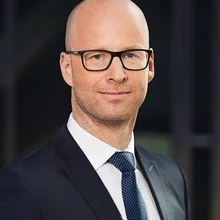
Clearing house of the year: Eurex Clearing
Risk Awards 2021: Clearer’s Prisma margin model proves its mettle in year of market tumult

For many clearers, the market volatility in March and April 2020 was a challenge of historic proportions and, by some measures, a bigger stress test than even the 2008 financial crisis. While all central counterparties (CCPs) scrambled to respond to the turmoil, one clearing house stood out, in particular for its smooth handling of futures and options.
That house is Eurex Clearing.
“Out of the majors [CCPs], I would give Eurex top marks,” says the head of clearing at a clearing bank. The Frankfurt-based CCP, he notes, produced the smallest number of intraday margin calls, higher margin floors for products and “less procyclicality”.
Eurex has earned the praise of many dealers thanks to its adaptive and conservatively calibrated margin model, as well as its willingness to learn from the crisis.
Even before last year’s market volatility, many in the market had considered the clearer’s Prisma margin framework superior to the industry standard, Span – so much so that CME, Ice and the London Metal Exchange had decided to change their margin models to be more like Prisma. But 2020 gave the framework the biggest chance yet to shine.
While the margin models of other clearers – including Canada’s CDCC and Asia’s largest houses – struggled to keep up with constantly changing market conditions, Prisma adapted, ingesting new data as the crisis began in March and automatically updating margin levels on a daily basis.
Eurex Clearing is still the only major futures and options clearer that uses such a self-calibrating value-at-risk model. Prisma coped better with the Covid-19 market turmoil thanks to two main differences with Span.
In parametric risk frameworks such as Span, the parameters needed for margin calculations are calibrated manually. As a result, some clearing houses using Span were unable to adjust margins quickly enough as markets see-sawed violently, highlighting the value of Prisma’s fully automated model.
Secondly, in Span-like frameworks, margin parameters are calibrated for each individual product. Therefore, working out such a parameter as correlation offsets between products in a larger portfolio also takes longer than it does in Prisma. Prisma’s VAR approach analyses entire portfolios, determining correlations from the off.
Clearing members say Prisma has other advantages. While Span can in theory be manually tweaked to delay margin increases, dealers prefer Prisma’s automatically calibrated VAR model because the margin hikes it produces provide immediate protection in periods of high volatility.
Prisma’s automatic nature also meant clearing members could predict where margins were going during the crisis, allowing them to anticipate liquidity demands and better monitor the credit risk arising from posting margin on behalf of clients.
Out of the majors [CCPs], I would give Eurex top marks
Head of clearing at a clearing bank
“What is better with Prisma is that it’s fully predictable,” says a senior source at a large European clearing member. “Prisma is a positive achievement and clearly leading the way versus the Span model.”
Lastly, unlike most other CCPs’ margin frameworks, Prisma includes add-ons for end-clients’ liquidity risk in initial margin, rather than charging clearing members for the risk. This means end-clients automatically pay for the liquidity risk they pose to the CCP – something many dealers welcome.
In addition to Eurex’s margin model itself, some clearing members like the model’s conservative calibration – specifically, that of two key parameters that were thrust into focus in 2020: the margin period of risk and margin floors.
Eurex assumes it would take three days to liquidate listed equity derivatives portfolios, which is more conservative than the two days required by European regulators. And it is far more conservative than the one-day minimum required in the US, although Eurex calculates margins on a net basis, while US CCPs do so on a gross basis.
As for margin floors, at many exchanges, these had been set relatively low before the pandemic, as a consequence of years of low volatility. But Eurex had taken a more cautious approach.
Dmitrij Senko, chief risk officer of Eurex Clearing, gives the example of the margin levels for the Euro Stoxx 50 futures, a liquid index that he says is “very comparable” to similar indexes cleared elsewhere.
“The floor [for the index] was around 7% before the crisis,” says Senko. “Similar products were at maybe 4–5% margin of notional at other CCPs.”

Prisma proved cautious in another way, too: when volatility declined from around May, the model’s design meant it lowered margins only gradually. As a result, when vaccine announcements triggered renewed volatility in November, no large margin breaches occurred. For instance, shortly before the November market rally, margins for the Euro Stoxx 50 futures stood at around 12% – a comparatively high level.
Throughout 2020, Eurex Clearing was open to suggestions from its members on how its margin framework could be improved further, according to the head of risk at a large US futures commission merchant (FCM).
“They proactively organised multiple sessions where they went through the breaches, the risk methodology, risk management, etc,” says the FCM’s head of risk.
“We’ve been having discussions with various CCPs, and some were more confrontational – and others, [like Eurex], have been very receptive.”
But praise for Eurex is not universal. Sources at two of the clearer’s large members declined to say which CCP fared best during the crisis, arguing that all houses had improvements to make.
Eurex Clearing’s chief technology officer, Manfred Matusza, says two large clearing members sometimes struggled to process a huge spike in their volumes at Eurex in late March, leading the CCP to extend clearing hours on certain days. The spread of the pandemic as the first quarter was ending added to what is already a busy time for futures trading.

But the fault for the logjam lay not with Eurex, but with the members themselves, Matusza suggests, arguing that the clearer’s systems could support double the volume that was displayed at peak times.
“We saw that for two of our largest members, backlogs were piling up,” he says. “We found that they were connected to us using single processing sessions …We offer the possibility to connect through multiple clearing sessions [simultaneously].”
Eurex’s largest clearing member uses more than 20 sessions in parallel, Matusza notes.
Some of Eurex Clearing’s expansion efforts also stood out last year. The CCP gained market share in the clearing of over-the-counter rates products, pulling a significant portion of short-dated swaps in particular from LCH. In January 2019, Eurex had around 50 clients doing around €100 million ($120.8 million) each in notional OTC swaps business at the CCP. In December 2020, almost 200 clients were at that threshold.
“We have really a great diversity [of clients] throughout Europe,” says Matthias Graulich, board member at Eurex Clearing.

In order to attract these new flows, Eurex entered into a revenue share agreement with its large members and, more recently, waived all booking fees for OTC swaps if portfolios are transferred to Eurex Clearing. The head of OTC clearing at a large bank quips that these incentives are “not cheap” for Eurex, but notes that the clearing house has done a “good job” building market share.
Average daily volumes in OTC swaps at Eurex increased by an impressive 33% compared with the previous year.
Looking ahead, buy-side firms will soon be able to achieve margin offsets between fixed income futures and rates swaps cleared at Eurex, with at least three banks set to start providing the service to clients in the coming months.
Cross-margin offsets within Eurex’s vast fixed income futures complex, which includes Bund, Bobl and Schatz futures on German government debt, could yield significant savings for clients with offsetting interest rate swap positions. As far back as 2013, Eurex was writing to asset managers promising savings of up to 74% on 10-year swap positions offset against Bund futures.
Graulich at Eurex says cross-margining is “a piece in the puzzle” to pull business to the CCP.
“Different elements are important for different client types,” he adds.
Only users who have a paid subscription or are part of a corporate subscription are able to print or copy content.
To access these options, along with all other subscription benefits, please contact info@risk.net or view our subscription options here: http://subscriptions.risk.net/subscribe
You are currently unable to print this content. Please contact info@risk.net to find out more.
You are currently unable to copy this content. Please contact info@risk.net to find out more.
Copyright Infopro Digital Limited. All rights reserved.
As outlined in our terms and conditions, https://www.infopro-digital.com/terms-and-conditions/subscriptions/ (point 2.4), printing is limited to a single copy.
If you would like to purchase additional rights please email info@risk.net
Copyright Infopro Digital Limited. All rights reserved.
You may share this content using our article tools. As outlined in our terms and conditions, https://www.infopro-digital.com/terms-and-conditions/subscriptions/ (clause 2.4), an Authorised User may only make one copy of the materials for their own personal use. You must also comply with the restrictions in clause 2.5.
If you would like to purchase additional rights please email info@risk.net
More on Awards
Best user interface innovation: J.P. Morgan
J.P. Morgan wins Best user interface innovation thanks to its Beta One portfolio solution
Market liquidity risk product of the year: Bloomberg
Bringing clarity and defensibility to liquidity risk in a fragmented fixed income market
FRTB (SA) product of the year: Bloomberg
A globally consistent and reliable regulatory standardised approach for FRTB
Best use of cloud: ActiveViam
Redefining high-performance risk analytics in the cloud
Best use of machine learning/AI: ActiveViam
Bringing machine intelligence to real-time risk analytics
Collateral management and optimisation product of the year: CloudMargin
Delivering the modern blueprint for enterprise collateral resilience
Flow market-maker of the year: Citadel Securities
Risk Awards 2026: No financing; no long-dated swaps? “No distractions,” says Esposito
Pricing and analytics: fixed income – Quantifi
Quantifi delivers high-performance, transparent and adaptable pricing and risk analytics for fixed income and credit markets







